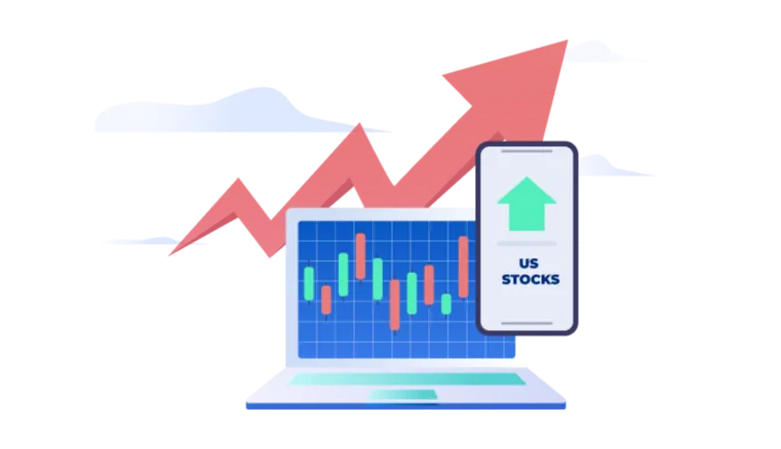The global textiles & apparel industry is a broad one and includes all types of clothing, shoes, and accessories – from second-hand clothes and sneakers to business wear and luxury statement fashion pieces. The industry can primarily be categorised into women’s, men’s, and children’s apparel markets. Women’s apparel is the biggest of these three market segments, generating more revenue than men’s and children’s apparel markets combined in the US at $133 billion in 2020. The industry’s 2021 global revenue was about $1.5 trillion, which is estimated to reach $2 trillion by 2026. Two countries make up a large share of this revenue – the US and China.
The industry was impacted by the pandemic in three significant ways – retail stores were forced to shut down, supply chains were disrupted, and the demand decreased as everybody was cooped up at home. However, segments such as athleisure and loungewear saw a boost in sales. The pandemic nudged companies to focus on their online presence and accelerate digitisation. It also forced companies to start addressing some of the issues that have long plagued the apparel industry, such as sustainability.
QUICK TAKEAWAYS
- The textiles & apparel industry includes all clothing and related items and has several market segments that overlap.
- The women’s apparel market is the biggest in the industry, and the athleisure and secondhand apparel markets are growing at a rapid pace.
- The US is the second-biggest apparel market in the world, with a revenue of about $317 billion in 2021.
- Supply chain efficiency and transparency, changes in discretionary income levels, e-commerce sales, and celebrity endorsements are some of the key drivers of the industry.
- Sustainable fashion, reverse logistics, and the use of AI technology will shape the industry in the coming years.
STATS CORNER
GLOBAL APPAREL MARKET REVENUE IN 2022
$1.53 trillion
(Source: Statista)
US APPAREL MARKET REVENUE IN 2022
$312 billion
(Source: Statista)
KEY PLAYERS
[WORLDWIDE, BY BRAND VALUE]
(Source: Statista l As of 2022)
[THE UNITED STATES, BY REVENUE]
| Company Name | Revenue Generated | Revenue Generated | Revenue Generated | Revenue Generated | Revenue Generated |
| 2022 | 2021 | 2020 | 2019 | 2018 | |
| Nike(Jun-May) | $46.792B | $44.493B | $37.420B | $39.122B | $36.363B |
| Gap(Feb-Jan) | $16.679B | $13.800B | $16.383B | $16.580B | $15.855B |
| VF Corporation(Apr-Mar) | $11.869B | $9.236B | $10.507B | $10.265B | $12.162B |
| Ralph Lauren (Apr-Mar) | $6.219B | $4.401B | $6.160B | $6.313B | $6.182B |
| Levi Strauss & Co.(Sep-Aug) | $6.265B | $5.466B | $4.636B | $5.786B | $5.450B |
(source: The Wall Street Journal)
- Nike (NYSE: NKE): With a brand value of over $30 billion, Nike is the world’s largest supplier and manufacturer of apparel, athletic shoes, and sports equipment. The company owns several brands such as Nike, Converse, and Jordan and has several high-profile athletes as sponsors, including Cristiano Ronaldo and LeBron James.
- Gap (NYSE: GPS): Gap is one of the biggest clothing and accessories retailers worldwide. Through its four, billion-dollar lifestyle brands – Old Navy, Gap, Banana Republic, and Athleta – it reaches different customer segments across demographics.
- VF Corporation (NYSE: VFC): With brands such as Vans, Timberland, Smartwool, and Kipling, VF Corporation is a global leader in lifestyle apparel and footwear. It has 1,400 owned retail stores and sells its products in over 170 countries.
- Ralph Lauren (NYSE: RL): Ralph Lauren is a global leader in the design and marketing of premium lifestyle products like apparel, accessories, and fragrances. The company that started as a necktie designer and seller now has over 8,800 upscale lifestyle product distribution centres across the world.
- Levi Strauss & Co. (NYSE: LEVI): Levi is one of the biggest apparel companies as well as a global leader in jeanswear. Its products are sold in over 50,000 retail locations across 110 countries.
KEY DRIVERS
- Discretionary income: While clothing is a necessity, the frequency, value, and quantity of apparel purchased by consumers depends greatly on their discretionary income. When the economy is facing high levels of unemployment, higher taxes, higher cost of credit, etc., consumer spending on textiles & apparel tends to go down. This decline in sales, depending on its scale, can directly impact the stock prices of brands. The opposite happens in periods of economic boom as well as the holiday season. Strong sales growth increases investor confidence in the prospects of the company and tends to increase the stock prices, especially right after the financials are released.
- E-commerce: In 2019, e-commerce sales made up about 30% of all apparel sales in the US. This number jumped to 46% in 2020 and is only expected to grow. While the pandemic forced brick and mortar retailers to close shop, even in the pre-pandemic world, a large percentage of consumers preferred to shop online. There are several benefits for companies expanding their digital footprint, from gathering consumer insights in real-time to opening up opportunities for targeted marketing, effective inventory management, and optimising for higher margins. In the long run, this transition, if done smartly, can help boost profitability as well as stock prices.
- Celebrity endorsements: Celebrity endorsements are impactful in an industry like apparel because an immediate element of trendiness and legitimacy is added to the products of the company. Industry insights reveal that a brand that enters into a contract with a celebrity or athlete tends to see an increase in their stock price by 0.25% as soon as the announcement is made. Brands can also see an almost instant increase in their sales by around 4%. Lately, influencer marketing has also been equally effective as a cost-effective way to reach a more targeted audience.
- Supply chain efficiency: Demand volatility, the short life cycle of trends, and accurate forecasting are some of the most prominent issues in the industry. Many brands were mitigating these challenges by manufacturing in East Asian countries like China and Taiwan, where labour is cheap and labour protection laws are relatively lax. However, now, fast fashion is being shunned by consumers, and growing consumer awareness demands that brands promote greater supply chain transparency. AI is being used as a solution by major brands to adjust supply. Companies that continue to address these supply chain issues successfully will be able to gain a larger market share by enhancing brand image and loyalty. As a consequence, such companies will see their stock prices rise.
WHAT DOES THE FUTURE HOLD?
With an increased consumer focus on sustainability, brands are likely to evolve operationally by building circular supply chains, managing waste with reverse logistics, and other significant measures. This begins with reskilling designers to create zero waste products since a disproportionately high fraction of the environmental impact of waste and pollution occurs due to faults in the design stage. It also means increasing the end-life value of products by bringing them back into the supply chain to minimise waste and emissions, apart from generating more economic value. Therefore, an increasing number of brands offer return, recycle, and repeat programmes for customers in order to recover and resell items instead of disposing of them.
Companies like H&M, though long associated with fast fashion, are taking strides in this direction. H&M has a garment-to-garment recycling machine Looop set up in one of its stores in Stockholm where customers can see an old piece of clothing being turned into a new one in real-time. Due to the growing environmental consciousness of customers, the second-hand apparel market is forecasted to grow significantly – from $36 billion in 2021 to about $77 billion by 2025.
The industry is at the cusp of several technological innovations in order to meet the varied needs of consumers. For example, several companies are in the process of creating lab-grown leather for high-quality vegan clothing and accessories, matching popular fashion trends without animal cruelty. Some of the major brands are also exploring innovations such as 3D-printed clothing and skin-feeding or body nourishing clothing. Inclusivity and body positivity are examples of cultural trends that the industry can no longer ignore, and therefore, concepts such as ‘growing garments’ or one-size-fits-all garments, along with modular shaped apparel, will see traction.
Gain access to the stocks of the biggest companies in the textiles & apparel industry by downloading the Appreciate app.








